What is a clamp meter, what is it for and how to use it

The measurement rules state that the voltmeter is connected to the required section of the electrical circuit in parallel, and the ammeter is connected in series. Therefore, in order to measure the current strength, it is necessary to artificially create an open circuit and connect a measuring device to it. To simplify and speed up measurements, current clamps are used, which work according to a fundamentally different method - their device allows you to measure the intensity of the electromagnetic field, which always occurs around the conductor.
Content
Clamp meter device
Initially, an electric clamp was a transformer to which a measuring device, an ammeter, was connected.
The pliers, which are the visible part of the device, are also the primary winding of the transformer. If a conductor is placed inside it, through which an electric current flows, then due to the electromagnetic field it is induced on the transformer winding. Further, the current passes to the secondary winding, from which readings are already taken with an ammeter.
The first clamp models were created as an addition to measuring devices, simply allowing for more convenient contact with the measured section of the chain.

The ammeter readings, which were obtained with their help, had to be additionally recalculated, taking into account the transformation ratio, which was indicated on the device. Also, the very principle of operation made it possible to measure the values of only alternating current, since the transformer does not work with a constant current - in order to measure it, it was necessary to use other devices.
Such models are somewhat more expensive, but they are of higher quality and accuracy of work.
Also, the use of a measuring clamp in tandem with a digital multimeter relieves the operator of the need to calculate the measured current value, since the calculator is already built into the device circuit.
Clamp Meter Capabilities
If initially the clamp was created as an addition to professional measuring instruments, then the further possibilities of the industry to miniaturize and simplify devices made this device relatively inexpensive and affordable for ordinary users for domestic use.
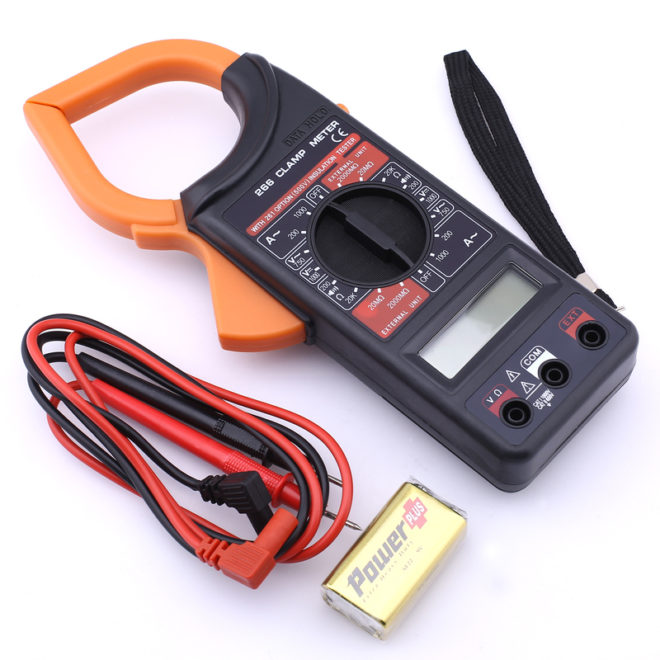
At the same time, the scope of its use is constantly growing and only standard tasks that can be performed with its help include the following points:
- Measurement of the current in a single conductor, which is not only not disconnected from the circuit, but also energized.
- Determination of the actual power of any electrical appliance at different times and depending on the load.
- Determination of the actual load on the entire electrical network of a house or apartment "in real time".
- Checking the power supply for unauthorized connections.
- Checking the presence of leakage current on the body of the appliance.
Advantages and disadvantages
Clamps are widely used due to a number of advantages, which determine the choice in their favor, if necessary, have an appropriate device "on hand":
- The greatest possible simplicity, device size and measurement accuracy.
- The ability to use for measurements in high-voltage circuits and microcurrents.
- The principle of operation of the ticks allows you to create devices of various designs and functionality.
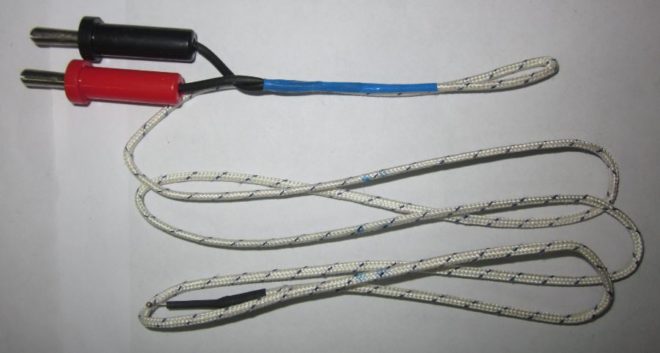
- Easy integration with other electrical measuring devices. For example, current clamps combined with a multimeter proved to be very effective - the limits of possibilities for domestic use for such devices is very difficult to imagine, since they can be equipped with a temperature sensor and other "buns" that expand the functionality.
Using an electric clamp, it is necessary to take into account some of the disadvantages inherent in such devices:
- Since the device reacts to an electromagnetic field, that is, a certain dependence on the position of the wire inside the primary winding (ring) and its position, it is advisable to place the clamp perpendicular to the measured conductor.
- The sensing device can be very susceptible to pickup currents that can occur when there are many conductors near the measurement.
- The simplicity of the device circuit opens up wide opportunities for the production of low-quality clones of devices from reputable manufacturers. Such copies are not equipped with proper protection schemes and the accuracy of their readings leaves much to be desired.
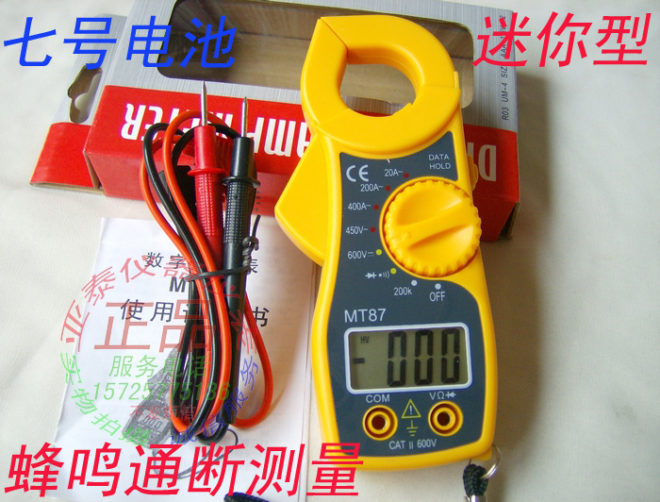
Varieties of current clamp
Depending on the circuit used and even the appearance of the device itself, electric clamp meters are divided into several types:
- Arrow keys. An analogue type device, the active part of which is a single-turn AC transformer, and the measuring device is connected to its secondary winding. These are one of the first models of clamp meters - they are notable for their low cost and clear display of measurement results in the case of variable amperage. A common disadvantage of such devices is their high sensitivity to mechanical vibrations - if the device is not on a hard surface, then the measurement result may be shown incorrectly. Also, to use such devices, a certain skill is required - often you have to manually translate the ammeter readings into real values in accordance with the transformation ratio. Another such device is designed for a certain frequency of electric current.
- Digital. The display of readings on the display of such a device is determined by a microcontroller, which automatically performs all the necessary calculations and (depending on the model) can be configured to display the current or power directly.
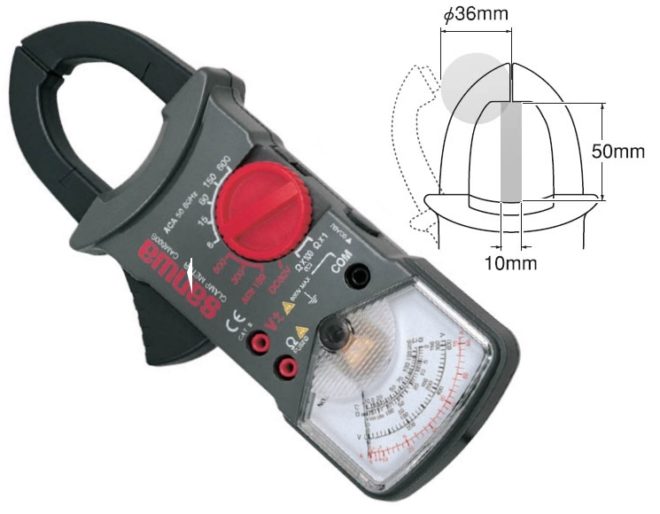
- Multimeter. A universal all-in-one device - the measuring clamp is built right into the body of the device, which makes it easy to use. The number of functions and measurement methods is determined by the multimeter model, so the correct name of the device will not be an electric clamp with a multimeter, but vice versa. Often, such devices work with a Hall sensor, so they can be used as a DC current clamp.
- High voltage. The main application is electrical circuits with a standard frequency current and voltage exceeding 1 kV. Such devices have increased insulation resistance and can additionally be mounted on a dielectric rod so that the operator does not come close to the conductor from which the measurements are taken. This is a specialized professional device that is designed for only one single function - AC current measurement. If necessary, other devices and methods are used to measure the DC current.
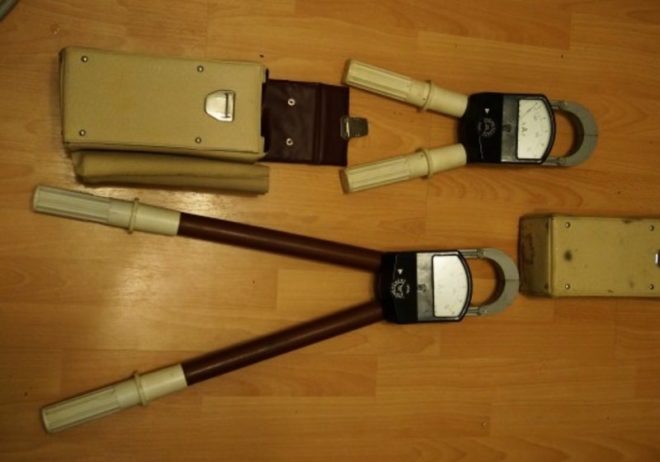
The procedure for working with a clamp meter
Measurement methods using a clamp meter are generally the same when using household multimeters (up to 1000 Volts) or professional (over 1000 Volts) devices.
Depending on the purpose of the measurements, the whole process using a clamp combined with a multimeter will proceed as follows:
- Among the wires, the one from which you need to take readings stands out. If you grasp several conductors with a clamp at once, the measurement result will be incorrect.
- The required mode and range are set on the tester. If AC is measured, then these will be AC, and when the device supports DC measurement, then DC. At the same time, on the scale, you need to select a value slightly larger than the one you plan to measure. If the estimated current strength is unknown, then the measurements must be started from the largest scale.
- The pliers are opened and the required conductor is placed inside. For the most accurate measurement, it is advisable to place the wire in the center of the circuit, perpendicular to the body of the device.
- The measurement will take place automatically and the display will show the results.
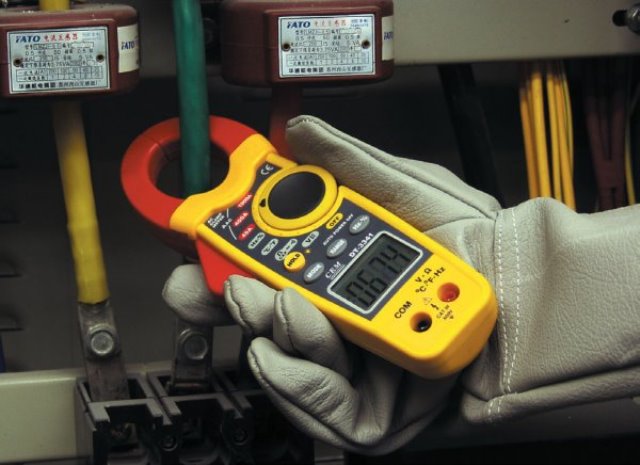
Useful nuances of taking measurements
Knowledge of some physical laws and structural features of the device will expand the scope of its application.
If the current in the conductor is very small and the tester cannot accurately determine it, then you can “help” the device by winding the conductor around one of the clamp halves. In this case, the display will show the sum of the currents and to find out the exact value, divide the result by the number of turns.
If the current is greater than what the tester can display, then the display will show one. In this case, you need to set a larger measurement range and repeat the measurements.
It is possible to detect the leakage current without looking for its presence on the grounding wire (connected to the device case). To do this, you can use the tester's ability to show the sum of the currents of several conductors placed in the clamp meter. If you grasp the phase and zero at once with the clamp, then the display should show zero, since the induced electromagnetic fields are mutually compensated (they should be the same in strength and different in direction). In the event of a leak, the value on the display will be different from zero - if so, then you need to look for the place of insulation breakdown to the case.

If there is a "Hold" button on the body of the measuring device, this will help measure the current in hard-to-reach places, for example, if the tester can reach there, but the display will not be visible. In this case, you need to grasp the wire with a current clamp, press this button and the result will be fixed on the display - now you can see it in a convenient place.
Things to consider when choosing a device
There are a large number of devices on the market, the functionality of which is noticeably different, which directly affects its cost. When purchasing a universal current clamp, it must be borne in mind that this is still a specialized tool for determining the current strength in a conductor under voltage. Therefore, it is worth deciding for yourself whether such functions are needed in this device, for example, checking capacitors, diodes and transistors.
The main tasks that the device must perform:
- Measurement of current and voltage (ideally AC and DC).
- Continuity of wires (preferably with a sound signal)
- Determination of the current frequency.
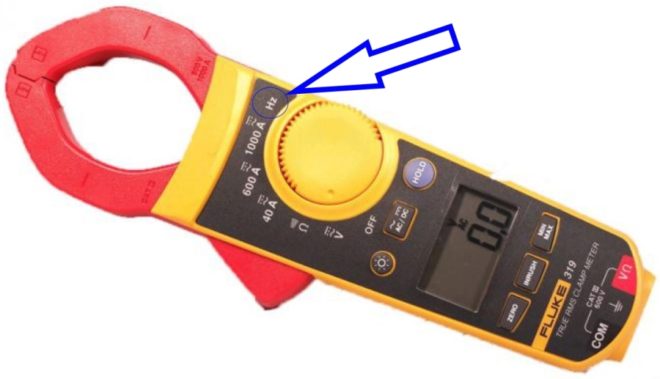
Desirable options that make things easier in some cases:
- Fixation of measurement results - "Hold" button
- Possibility of setting zero - if adjacent wires give a pickup.
- Possibility of measuring the inrush current, which is several times higher than the nominal one.
- Automatic range selection when displaying results.
- A plus will be the ability to connect a temperature probe to measure temperature.
- Large backlit display.
Also, it is imperative to pay attention to the quality of the plastic, the absence of metal parts on the surface of the device and what batteries are used (so that they can be found and replaced without problems, if necessary)
Clearly about the current clamp in the video:
As a result, a measuring current clamp is a device that greatly simplifies the work of a professional electrician and a home craftsman who is used to doing everything with his own hands. Using the device, in general, does not differ from taking measurements with a tester or multimeter - it is intuitive and accessible even for people with minimal skills, but in some cases some knowledge will be needed to interpret the obtained measurement results.




